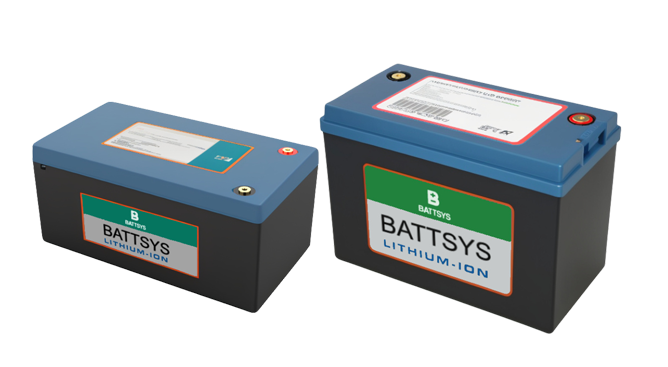What are the types of balanced charging circuits for lithium battery packs.
What are the principles of balanced charging for lithium-ion battery pack protection boards and what are the types of balanced charging circuits for lithium-ion battery packs? The commonly used balanced charging techniques include constant shunt resistance balanced charging, on-off shunt resistance balanced charging, uniform battery voltage balanced charging, switched capacitor balanced charging, buck converter balanced charging, inductor balanced charging, etc. When charging a group of lithium-ion batteries in series, it is necessary to ensure that each battery is charged evenly, otherwise it will affect the performance and lifespan of the entire group of lithium-ion batteries during use.

Principle of Balanced Charging for Lithium ion Battery Pack Protection Board
When charging the lithium-ion battery pack, the external power supply of the lithium-ion battery pack protection board is connected to the positive and negative terminals bAT+and bAT - of the battery pack, respectively. The charging current flows through the positive terminal bAT+of the battery pack, the single lithium-ion batteries 1 to N in the battery pack, the discharge control switch device, the charging control switch device, and the negative terminal bAT - of the lithium-ion battery pack protection board.
The charging overvoltage protection control signal of a single lithium-ion battery protection chip in the control circuit of the lithium-ion battery pack protection board system is isolated by an optocoupler and output in parallel to supply gate voltage for the conduction of the charging switch device in the main circuit; If one or several lithium-ion batteries enter an overvoltage protection state during the charging process, the overvoltage protection signal controls the parallel discharge branch connected at the positive and negative terminals of the single lithium-ion battery to discharge, while disconnecting the corresponding individual lithium-ion batteries connected in series from the charging circuit.
The lithium-ion battery pack protection board system achieves balanced charging by controlling the switching devices of the shunt discharge branch through the protection chip while providing charging protection. This method is different from the traditional approach of achieving balanced charging at the charger end and reduces the cost of designing lithium-ion battery pack chargers.
Lithium ion battery protection board with electric balance function
When there is a voltage difference between each battery in the battery pack due to battery matching or external environmental influences, if the voltage difference between the batteries in series exceeds the set value, the balancing circuit is allowed to work. The balancing is started during the charging process, and the balancing resistor discharges the battery pack with the highest relative capacity. The balancing current is the balanced absorption current value, which reduces the rate of voltage rise of the battery pack,
When the voltage difference between the series connected battery groups is less than the set value, the balancing circuit is prohibited from working and there is no balancing power.
Researchers at home and abroad have proposed many different circuit topologies for the design of balanced charging circuits for battery packs. Based on the energy consumption of the circuit during the balancing process, the battery pack balancing charging circuit can be divided into two categories: energy dissipation type and energy non dissipation type.
1. Energy dissipation type balance is achieved by parallel shunt resistors at both ends of each individual cell in the battery pack for discharge. The shunt resistor discharge balancing circuit is the most straightforward balancing technology, which discharges high-capacity individual cells through shunt resistors until all cell capacities are at the same level.
2. Compared to energy dissipation equilibrium, energy non dissipation equilibrium circuits have lower energy consumption but relatively more complex circuit structures.
① Feidu capacitor generator is a method of connecting each battery in parallel with a capacitor. By switching this capacitor, it can be connected in parallel to its own battery or to adjacent batteries. When the voltage of a certain battery is too high, first connect the capacitor in parallel with the battery, and the voltage of the capacitor is consistent with that of the battery. Then switch the capacitor to the adjacent battery, and the capacitor discharges the battery to achieve energy transfer.
② The switch capacitor method for balancing a power lithium battery pack composed of n single cells connected in series requires n-1 capacitor elements and 2n switching devices in the switch capacitor method balancing circuit. Taking the example of inconsistent voltage at the terminals of individual cells b1 and b2, there are two states in the control process. The disadvantage of this circuit is that it can only be used for voltage balancing between individual cells, and can only achieve energy flow between adjacent cells. Therefore, when there are a large number of cells in series, the balancing time is relatively long.
③ The double-layer capacitor balancing circuit is also a derivation and transformation of the switched capacitor circuit, with the difference being that it uses two layers of switched capacitors to achieve energy transfer between batteries. Compared with the switch capacitor balancing circuit, the advantage of this circuit is the use of an additional outer switch capacitor, which enables the individual battery to not only balance the voltage with adjacent cells, but also with non adjacent cells, thus improving the balancing speed.
The above is the principle of balanced charging for lithium-ion battery pack protection board and the classification of balanced charging circuits for lithium-ion battery packs. The existing single cell lithium-ion battery protection chips do not include balanced charging control function, while the balanced charging control function of multi cell lithium-ion battery protection chips requires an external CPU; By implementing serial communication with the protection chip, the complexity and design difficulty of the protection circuit are increased, the efficiency and reliability of the system are reduced, and power consumption is increased.
